Many of my trips to the Outer Banks include a visit to Jockey's Ridge, a massive system of sand dunes in Nags Head, NC. The landscape here is one of seemingly endless sand, vast and sublime. The territory of the dunes begins at the waters of the Roanoke Sound where the towering sands protect a gnarled maritime thicket of live oaks, wax myrtle, and pine. From there it stretches east towards the ocean, encompassing almost the entire width of the island. Only the bending highway, appearing stretched by the bulge of sand, and a single row of beach houses separate it from the Atlantic. In its interior, you feel transported to a faraway desert world.
Jockey's Ridge, Nags Head, NC. 2018.
“Jockey’s Ridge is the tallest living natural sand dune system in the Eastern United States. Its height varies from 80 to 100 feet, depending on weather conditions.
Shifting maritime winds blow billions of grains of sand in different directions, constantly changing both the shape and size of the dune. Why doesn’t the sand blow away? In the winter, the winds usually blow out of the northeast and in the summer out of the southwest; therefore, the sand is constantly blown back and forth.
Jockey’s Ridge is an example of a medano—a huge hill of shifting sand that lacks vegetation. There are several prominent sand dunes in the area. Of them all, Jockey’s Ridge is the most spectacular.
Geologists believe that Jockey’s Ridge was formed when strong water currents from hurricanes and storms washed sand from large offshore shoals onto the beach. Throughout many years, the wind picked up this sand and blew it inland. These tiny grains of sand evolved into a system of dunes that now stretches for many miles along the coastline.”
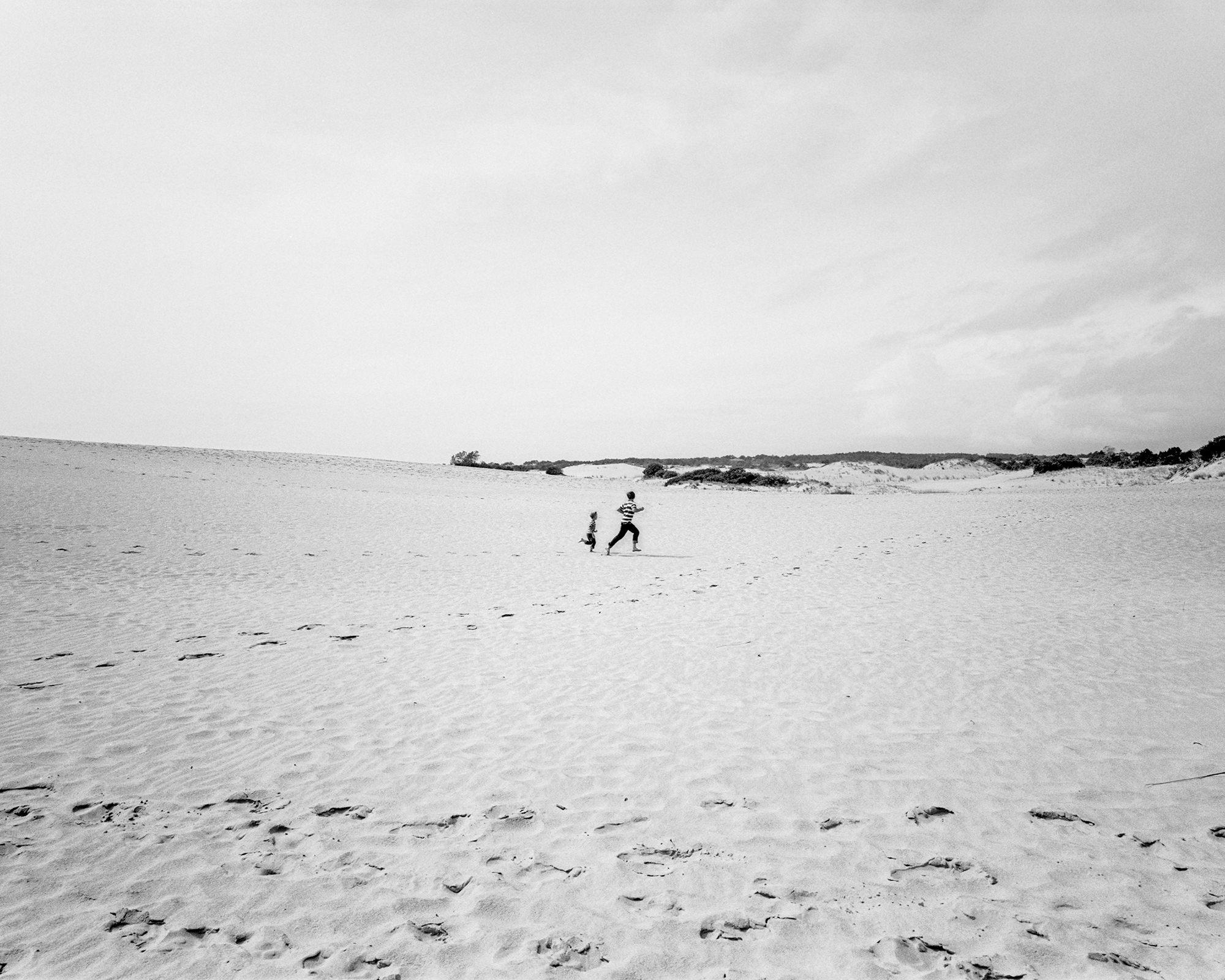
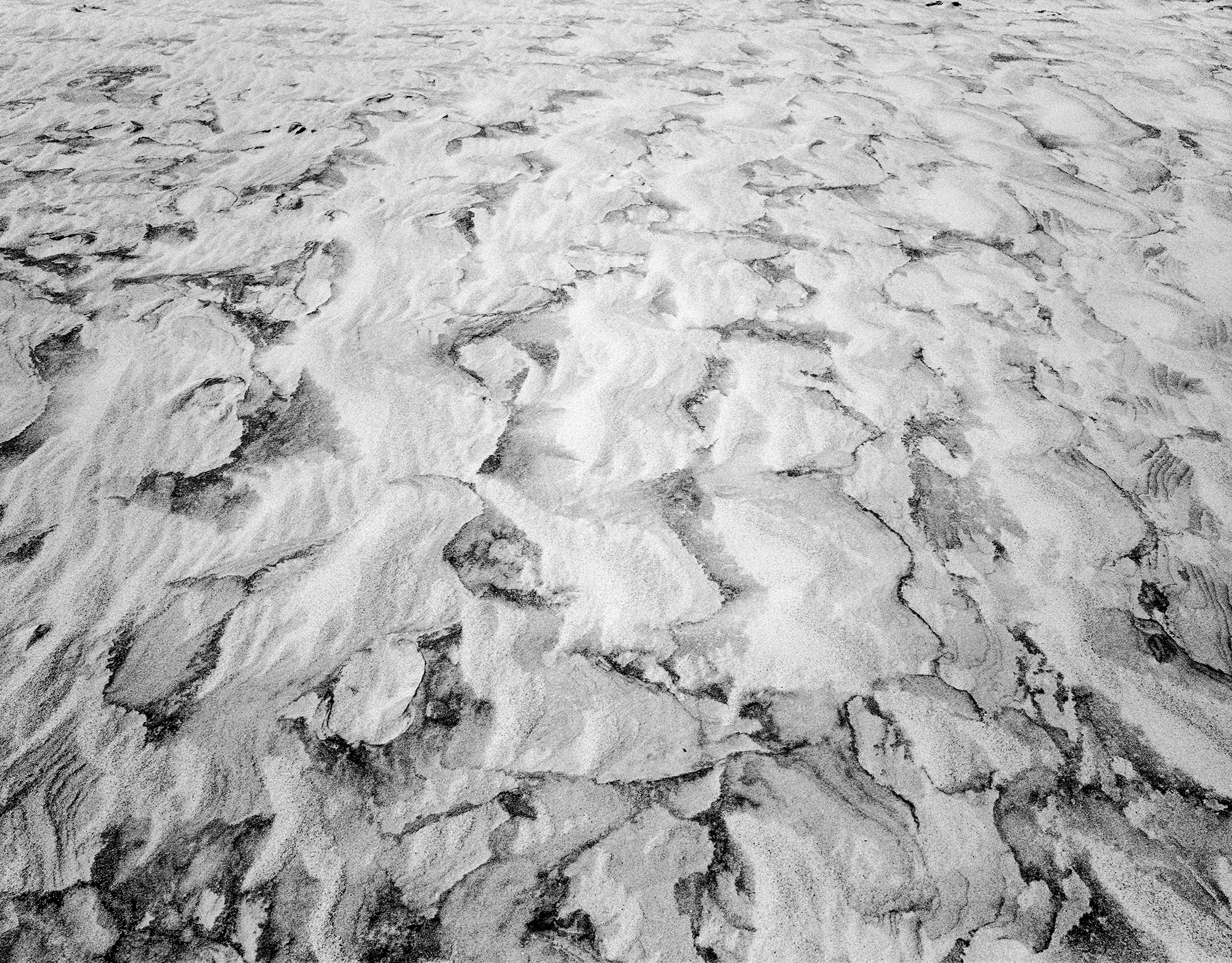
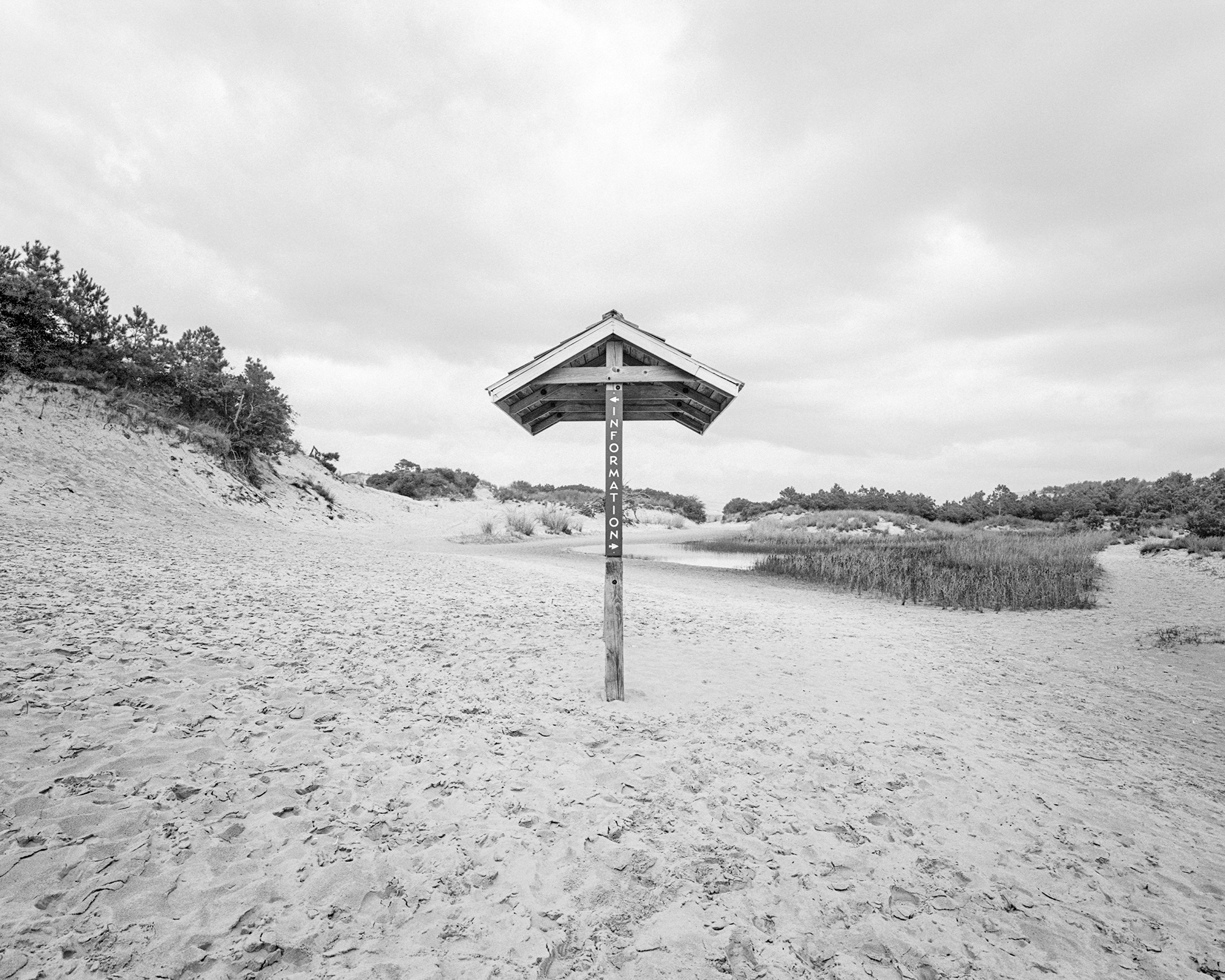
The fact that we can visit Jockey's Ridge today can be attributed to one person: Carolista Baum, who literally stood in the path of a bulldozer to block its destruction and was instrumental in the creation of a State Park at Jockey's Ridge. From The N.C. Department of Natural and Cultural Resources:
“On August 15, 1973, Carolista Fletcher Baum placed herself in the path of a bulldozer removing sand from Jockey’s Ridge and refused to move. The driver cut off the engine and talked with Baum, who, after some time, left the dune unscathed. When the operator left, Baum took the distributor cap so the machine would not start.
She helped form the People to Preserve Jockey’s Ridge after her dramatic protest, raising money and organizing petition drives to capture the attention of state and local lawmakers.
In 1973, the Division of Parks and Recreation issued a report in favor of preserving Jockey’s Ridge as a state park, and a year later the dune was declared a National Natural Landmark. When the General Assembly appropriated funds to create the park in 1975, the preservation of the dune was secured for generations to come.”
Jockey's Ridge, Nags Head, NC. 2018.
Beyond pickets of disappearing sand fencing or the occasional abandoned kite, there aren't many man-made objects within Jockey's Ridge. One of the few exceptions is the last remnant of Jockey’s Ridge Mini Golf: a concrete castle, built in 1975, now continually buried and unburied as the sands of the East Coast's largest dune ebb and flow. On a recent trip the castle had been almost entirely uncovered by a strong winter storm. Previously, only the top of the highest turret poked above sand. See below for a selection of photos from the John Margolies Roadside America photograph archive depicting the attraction in 1985:
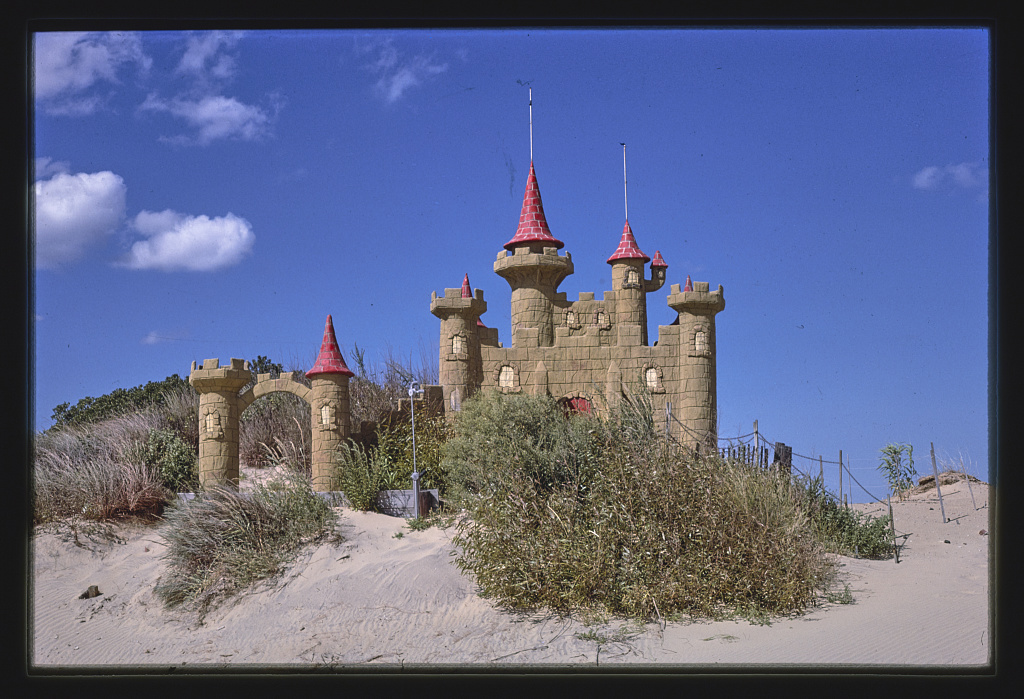

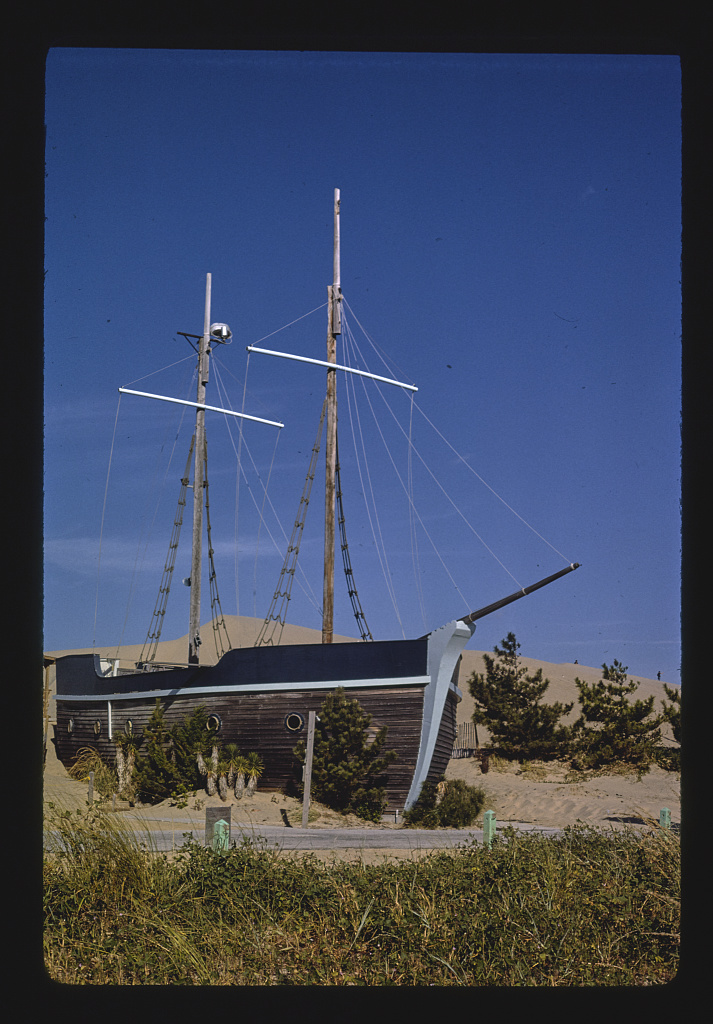
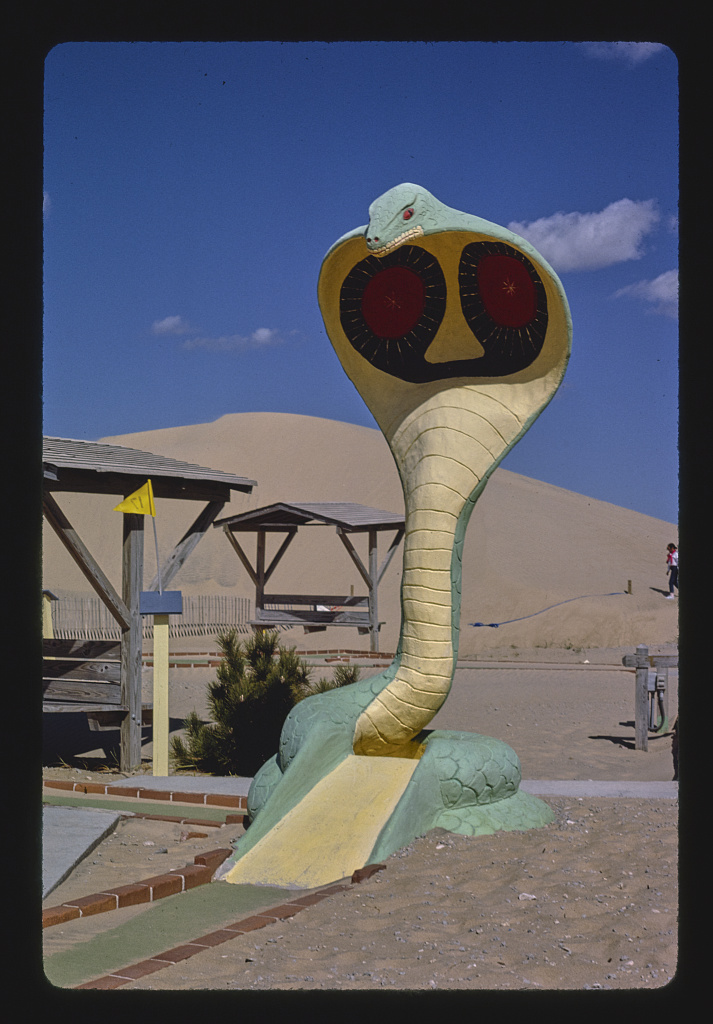
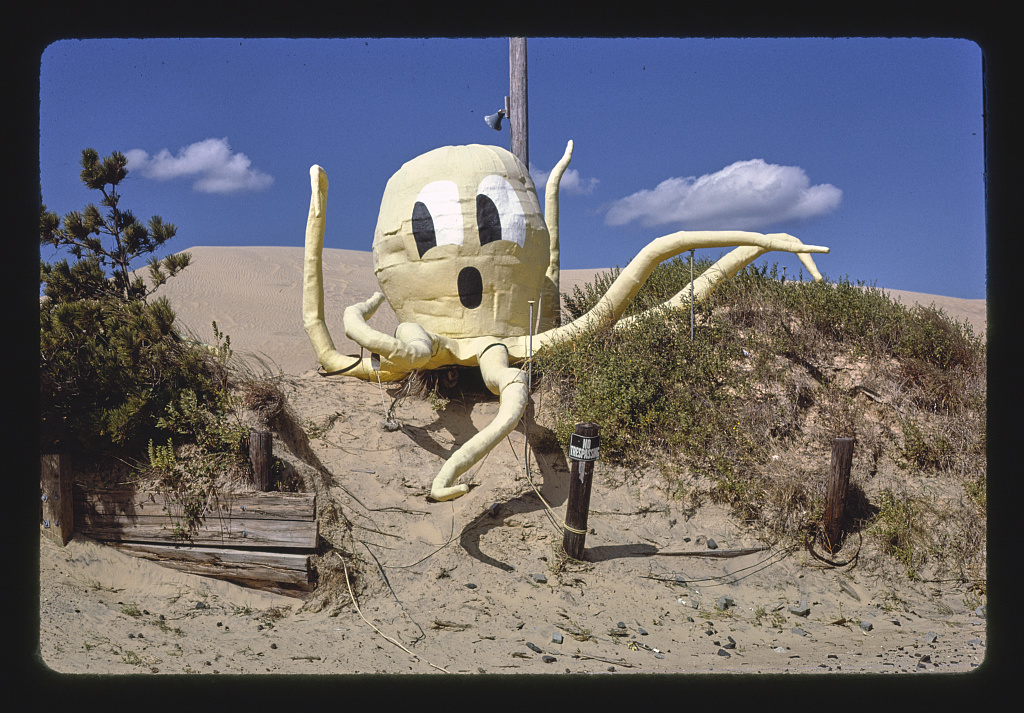
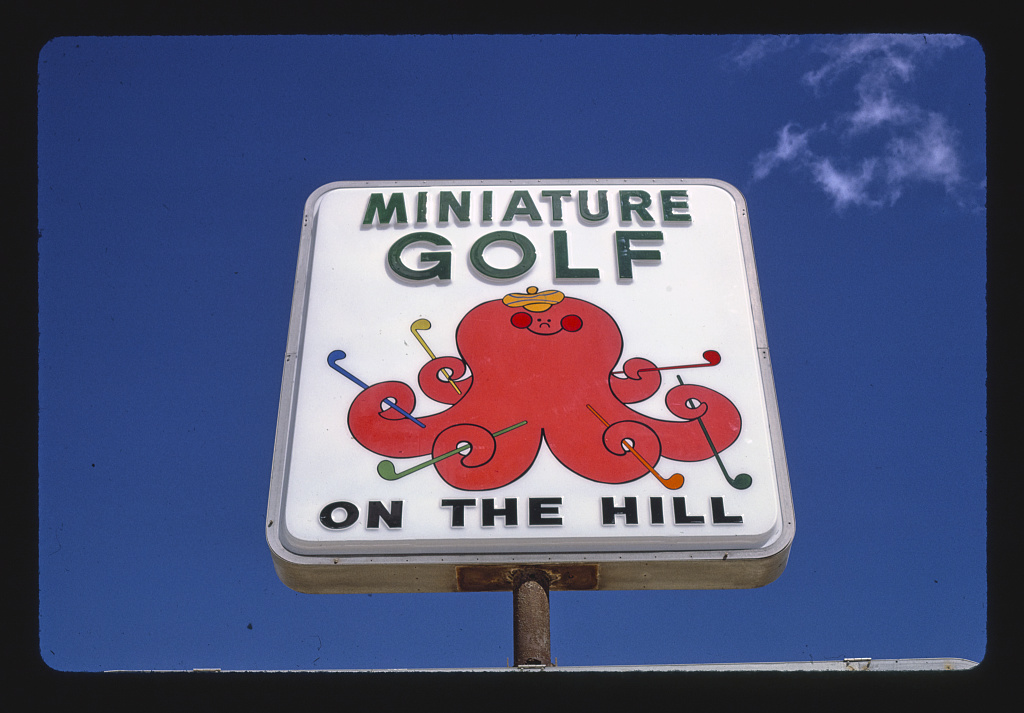
From The Mapless Traveler:
“According to an article in the July 10, 1987 edition of the Wilmington Morning Star, the state purchased the attraction that month in order to allow the sands to continue their natural expansion. Previously, sand blowing into the golf course and nearby homes had been hauled away by dump trucks periodically to allow business to continue.
According to messages and vintage photos left on online forums, the attraction included an 18 hole course, a giant cobra, an octopus, a castle (with fountain), and a pirate ship that functioned as the office and check-in building. An online poster stated in several forums and Flickr photo comments that her grandparents, the Meekins, built the course in 1975 and that the state used eminent domain to seize the course from them years later. The poster also shared that most of the structures were removed and sold with the exception of the putting greens and the castle. The ship reportedly went to a church that used it for youth group functions. Originally, the dunes buried half of the 18 hole golf course while it was still in business – necessitating another 9 holes to be built farther south on the property.”
Jockey's Ridge, Nags Head, NC. 2015.
Jockey's Ridge is one of my favorite places on North Carolina's coast. Its massive scale and visual might seem overpowering and elusive to translate through imagery. Whenever I'm there I stay longer than I intend and leave wanting: for one more shot, a different view, the perfect scale figure. And when I return it's a place anew, reminiscent but definitely shifted, each visit a glance at a kilometer wide wave of sand, undulating between summer and winter winds.


